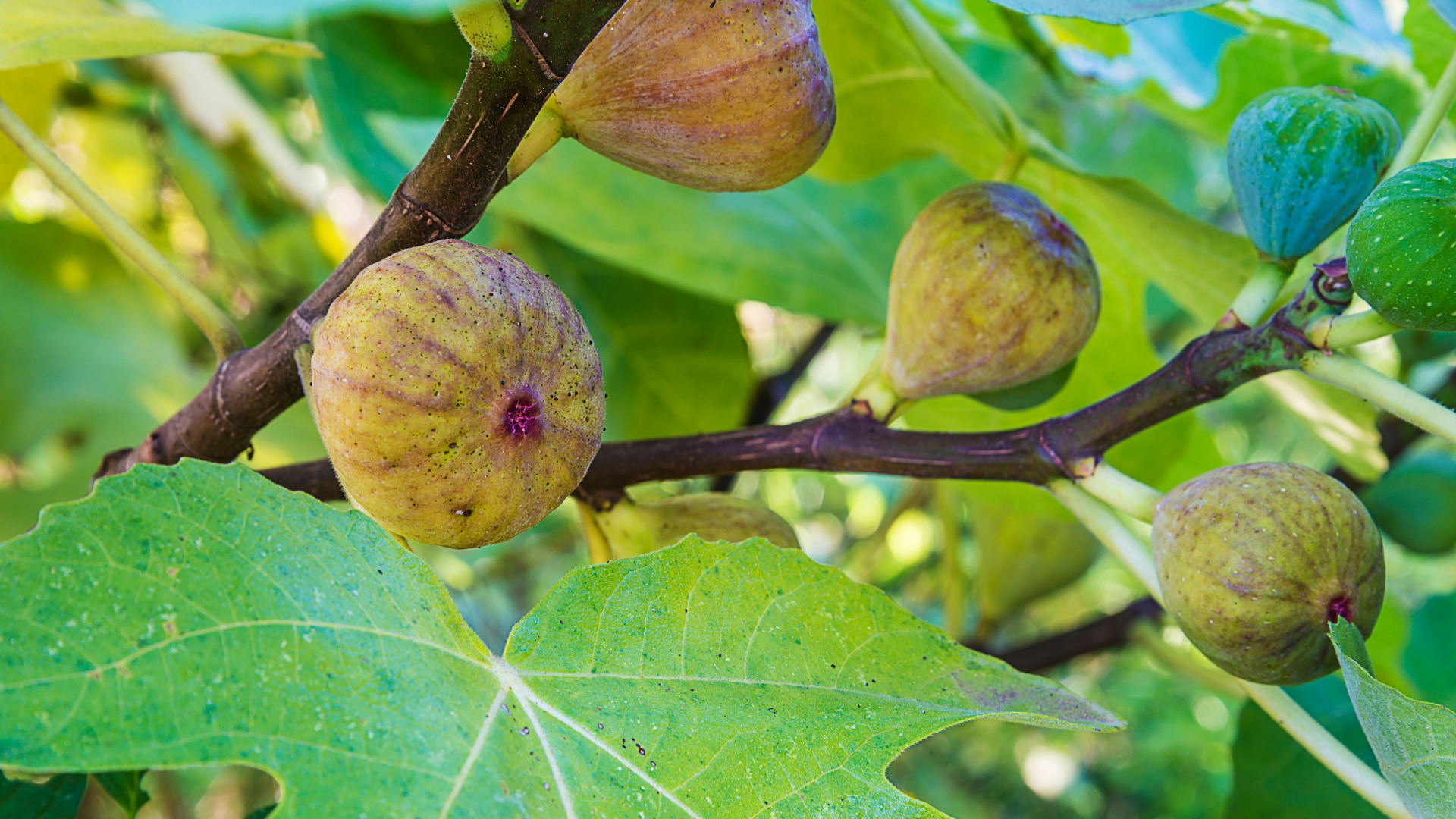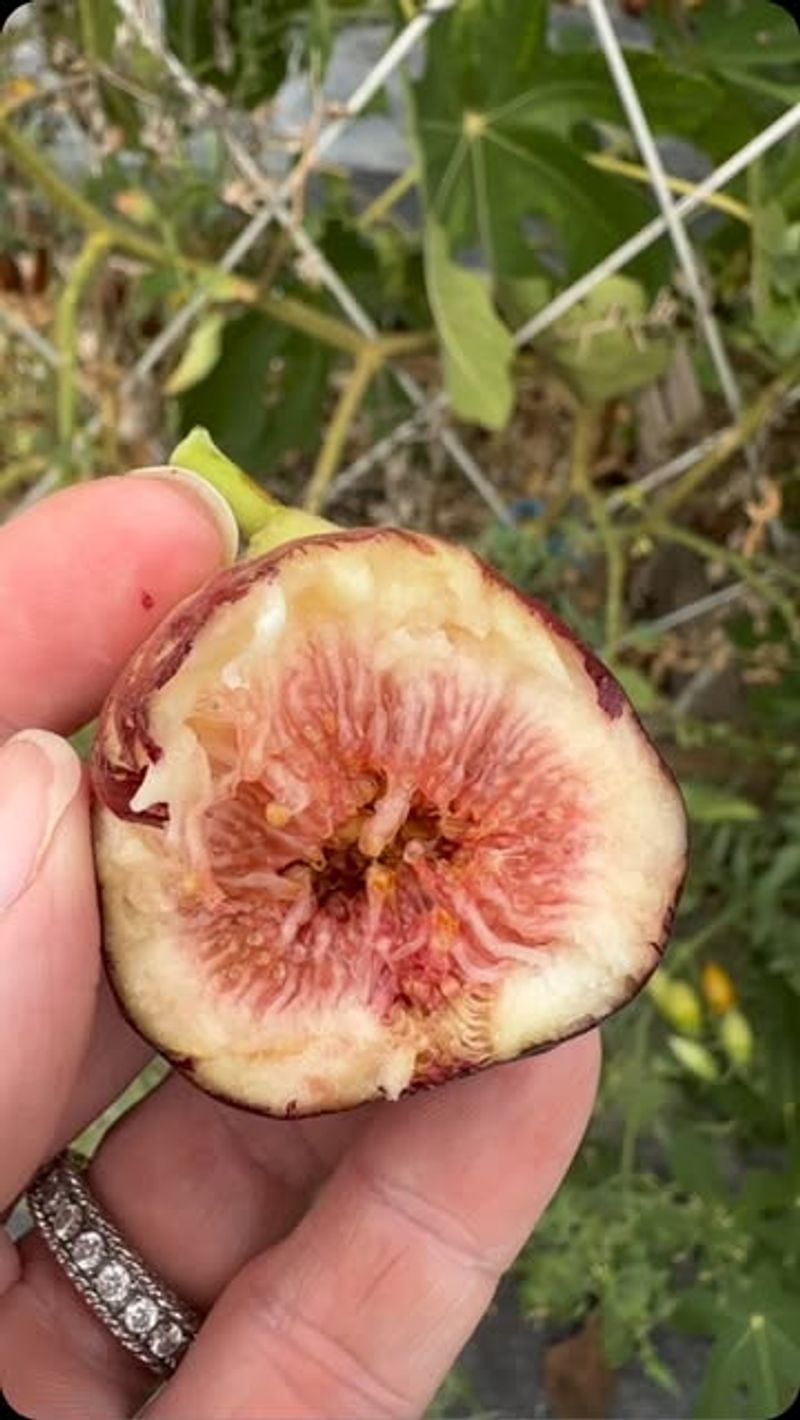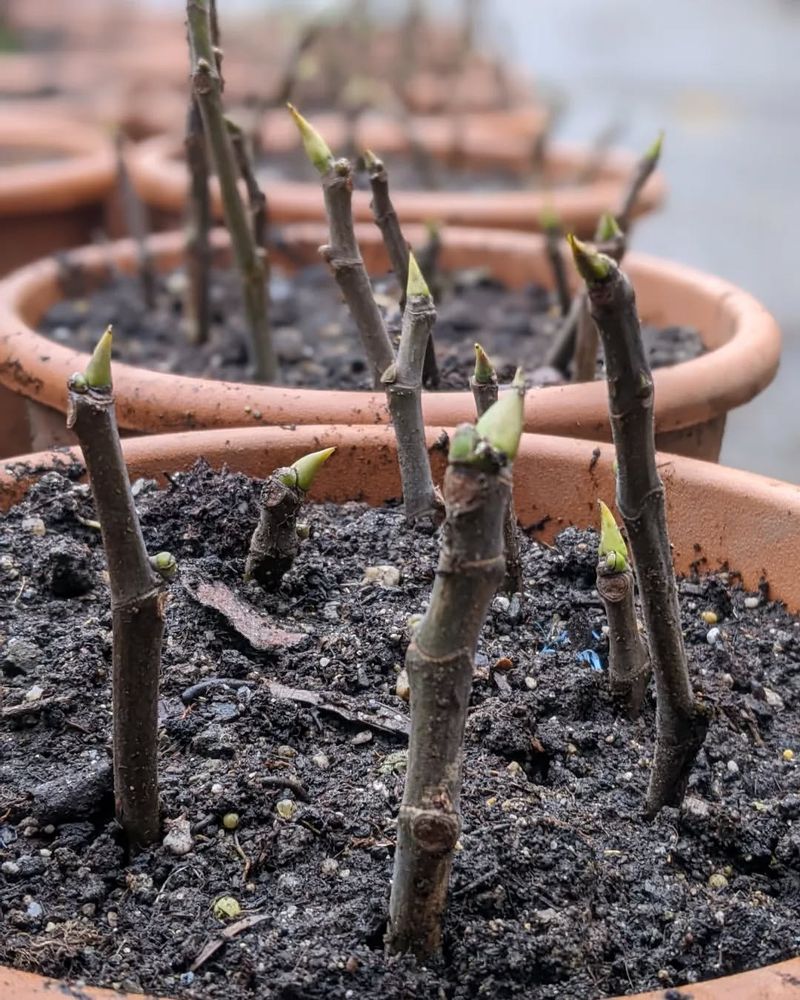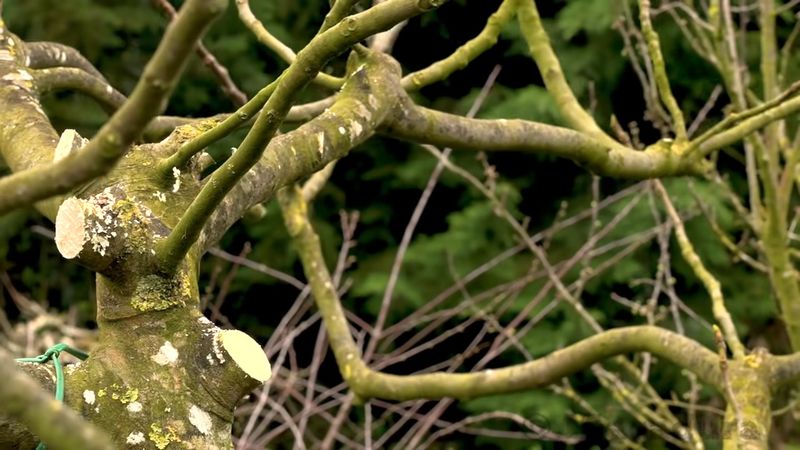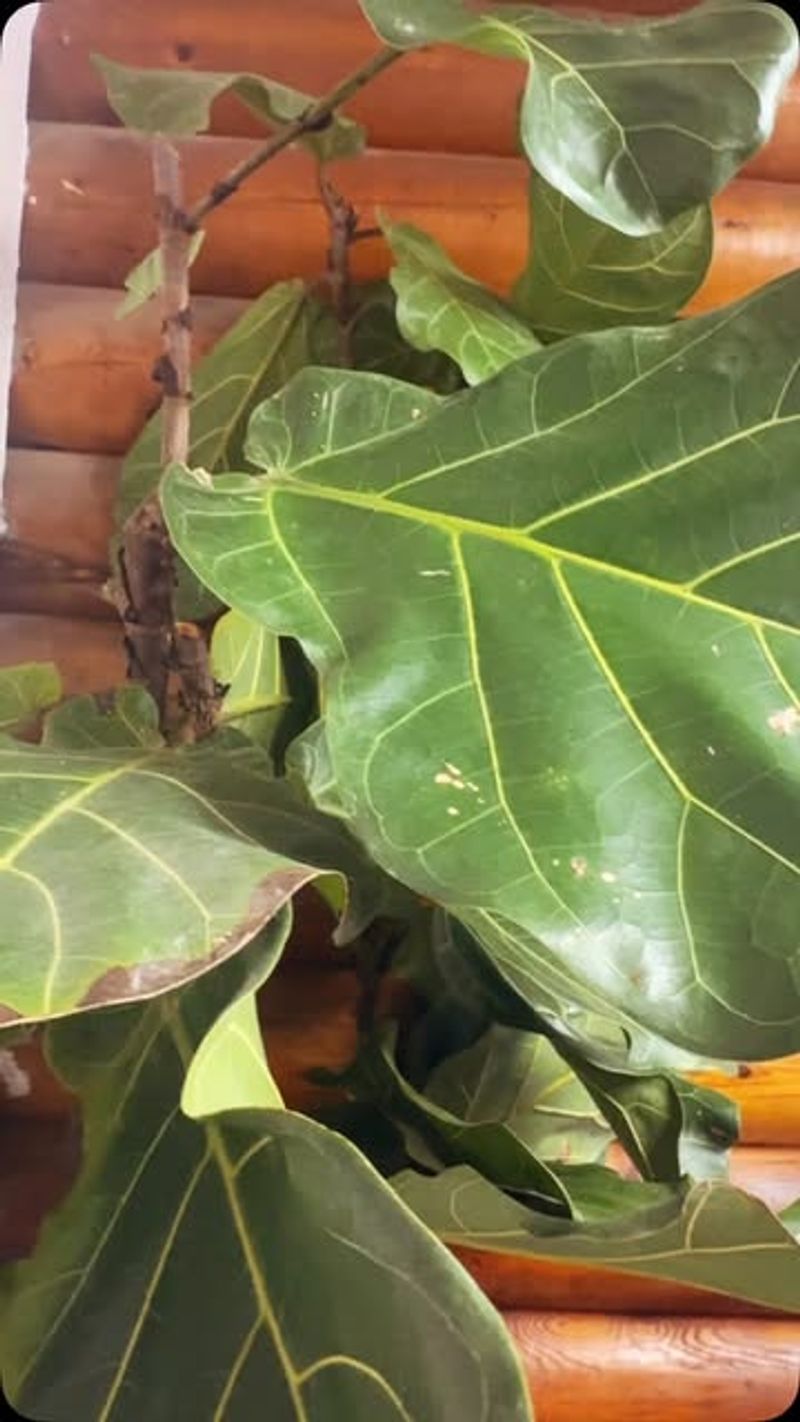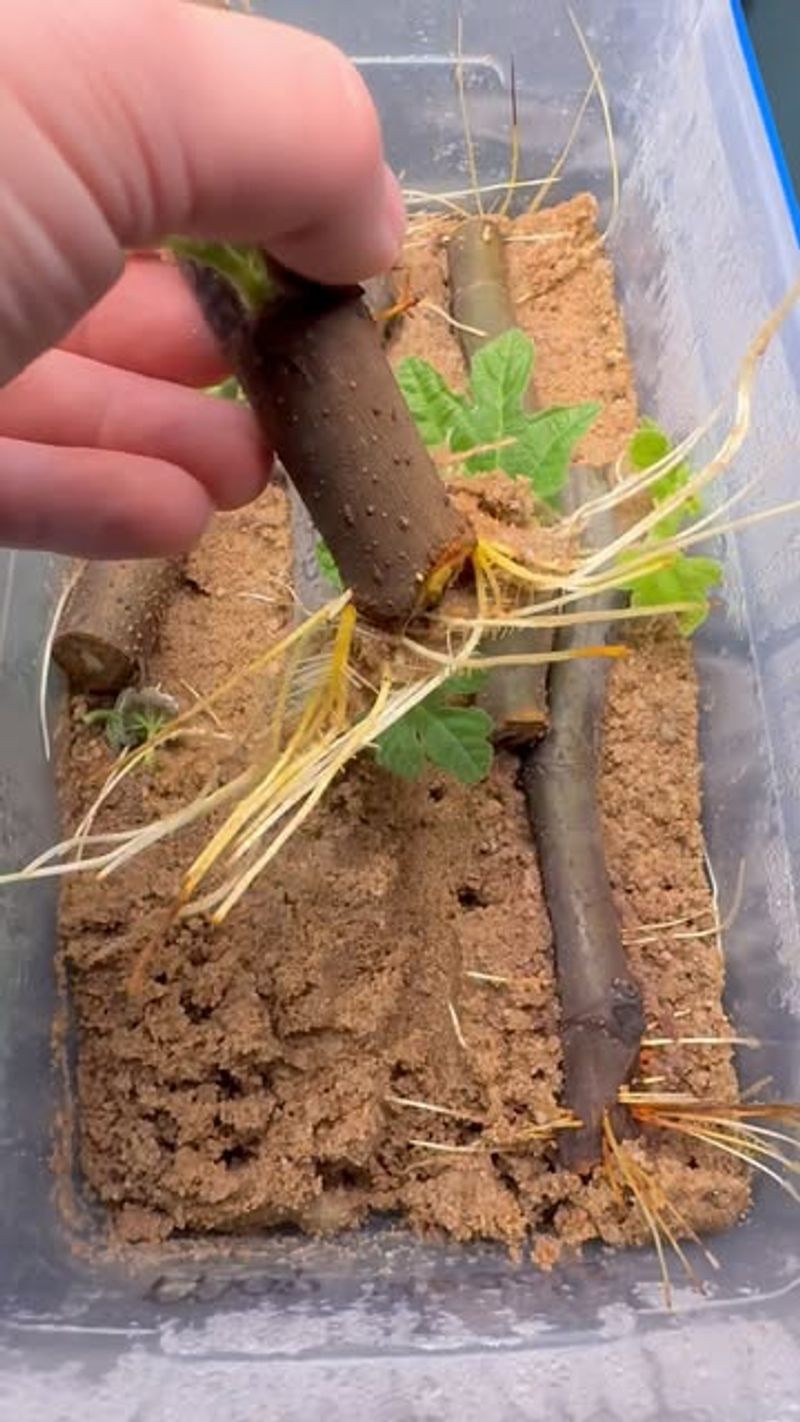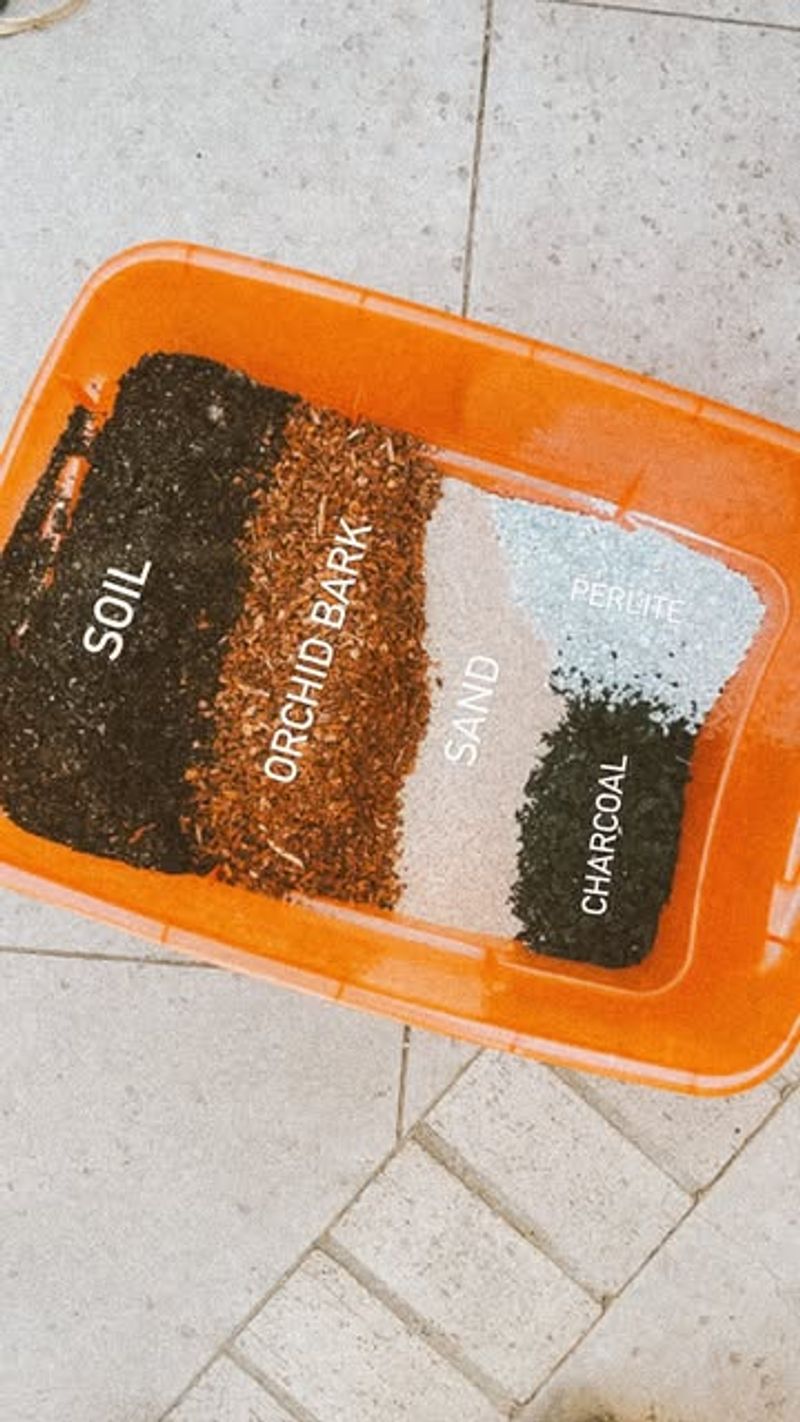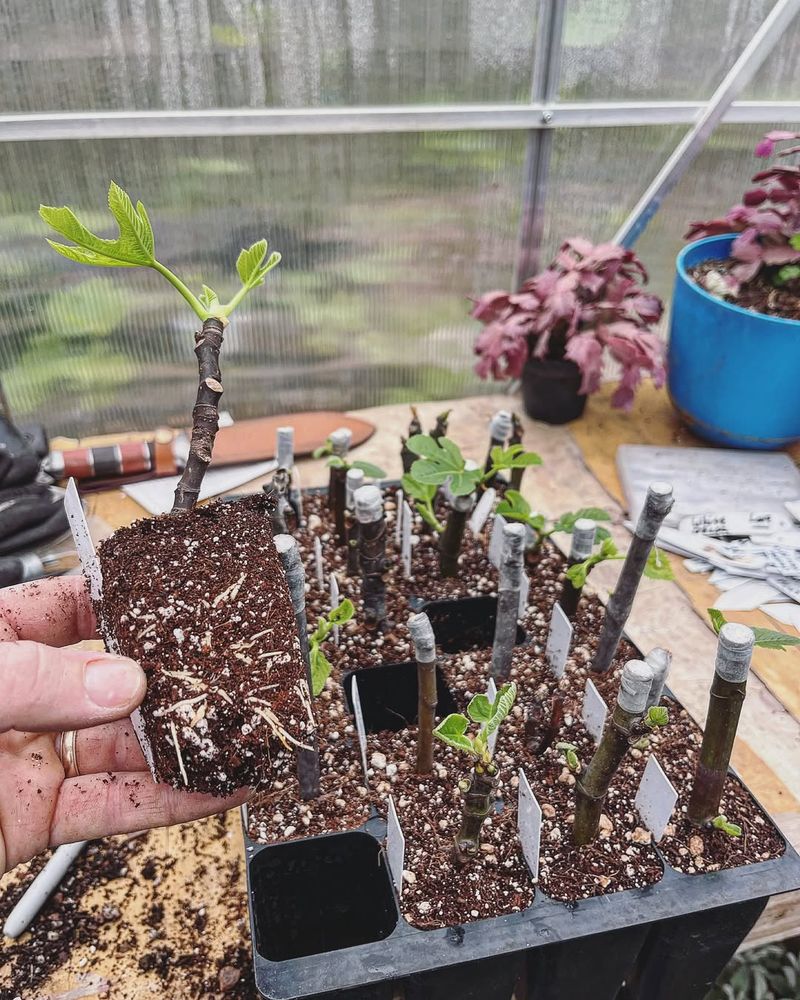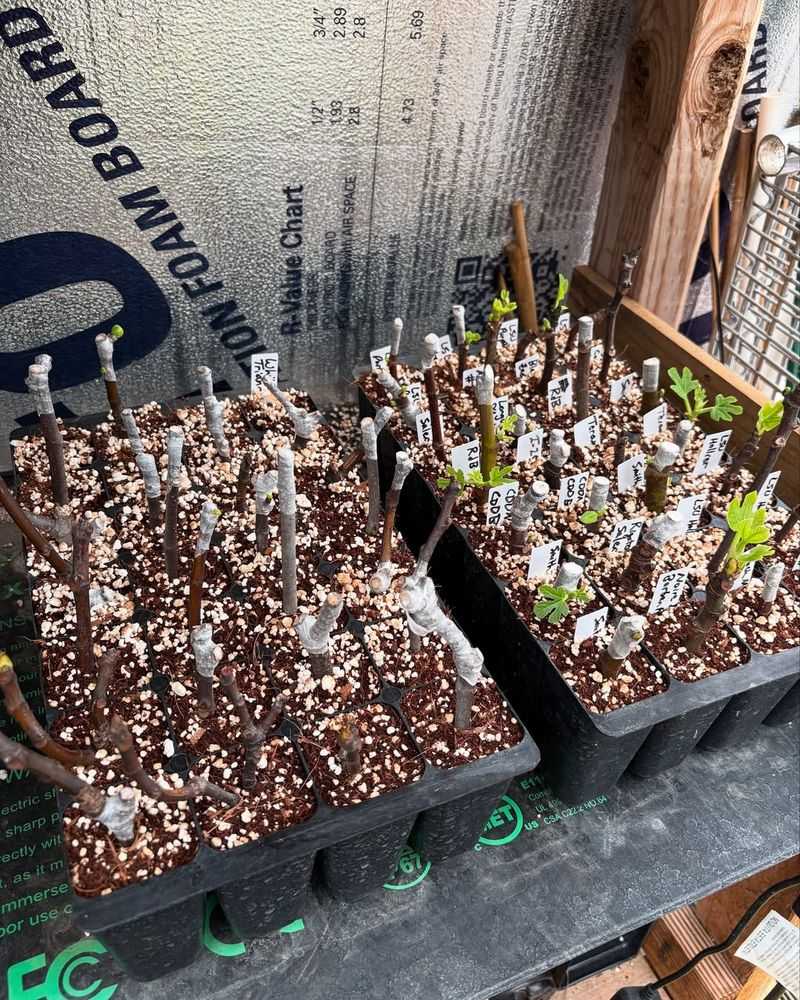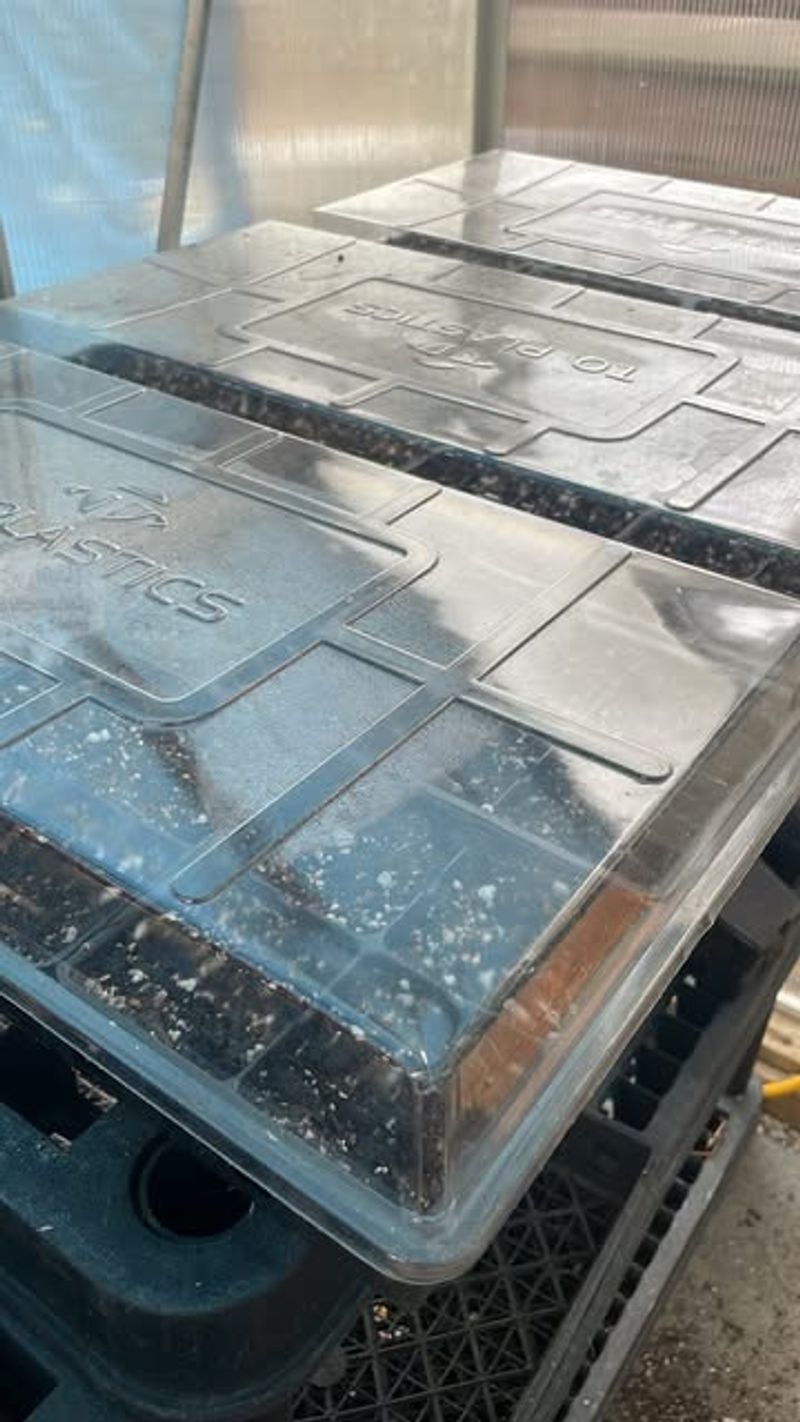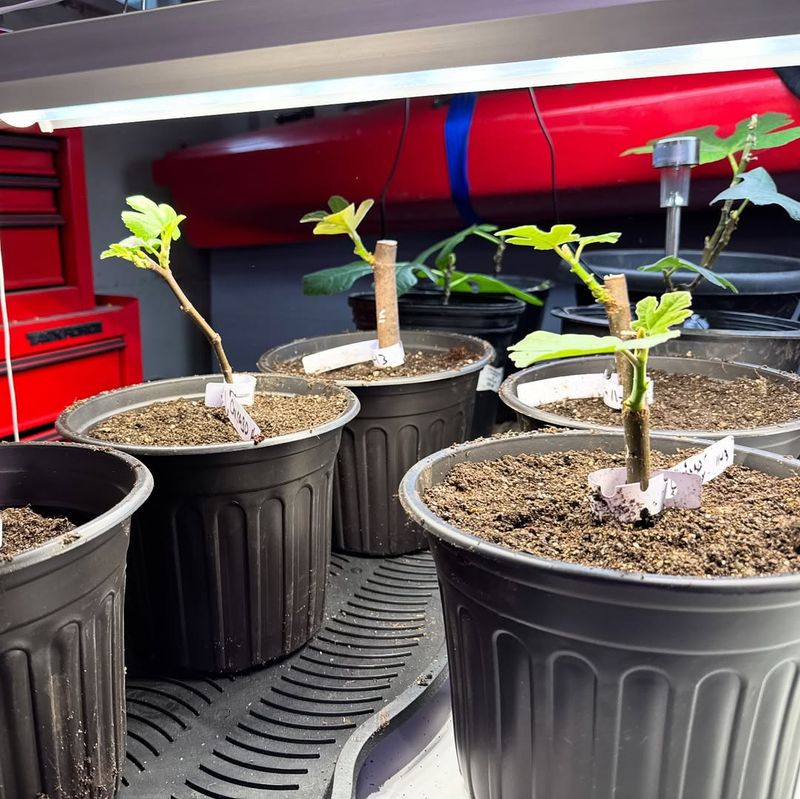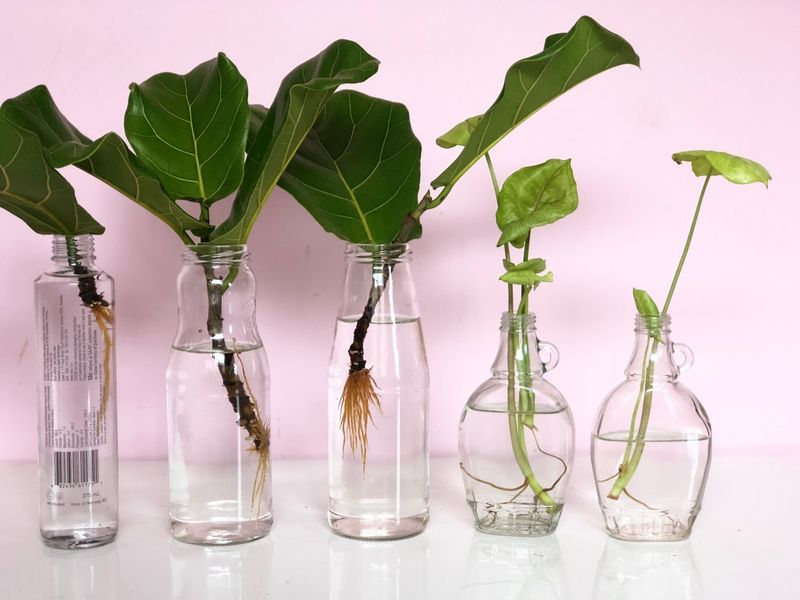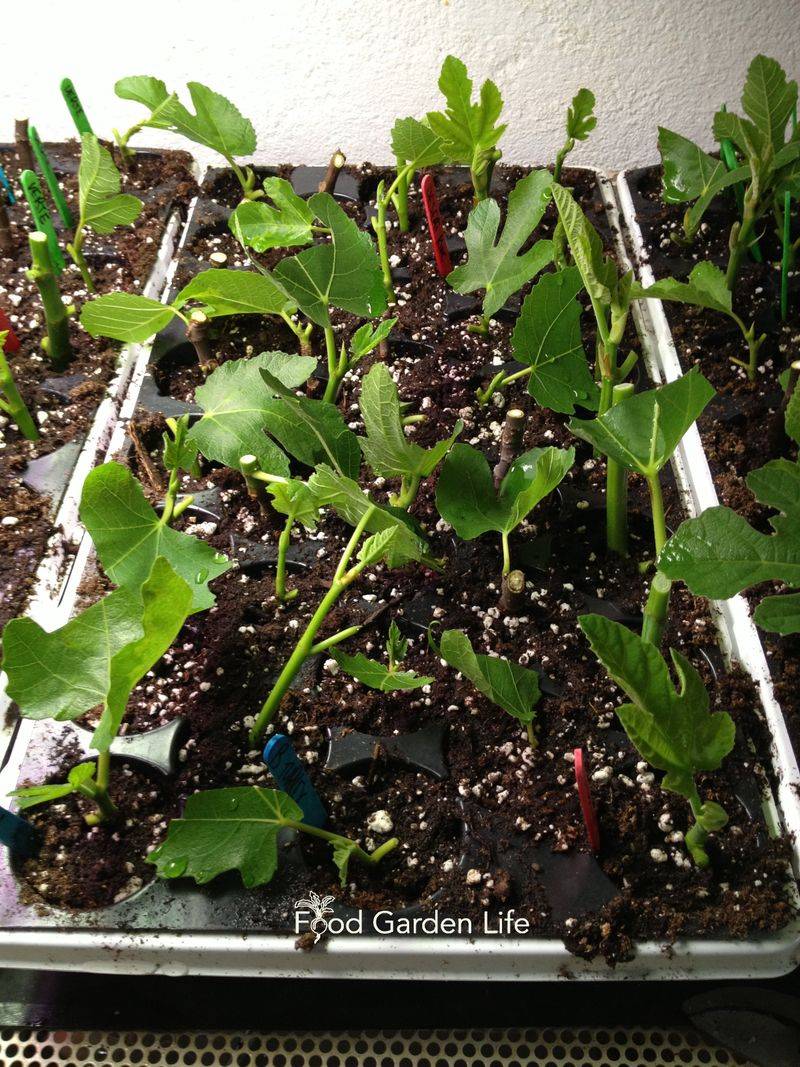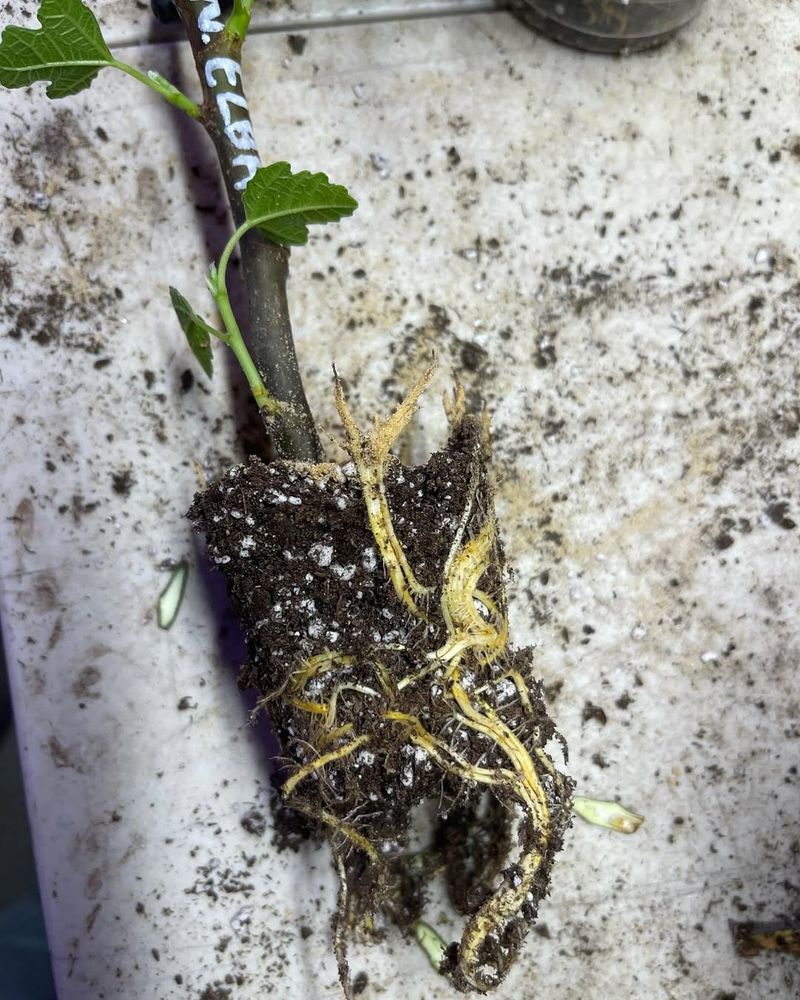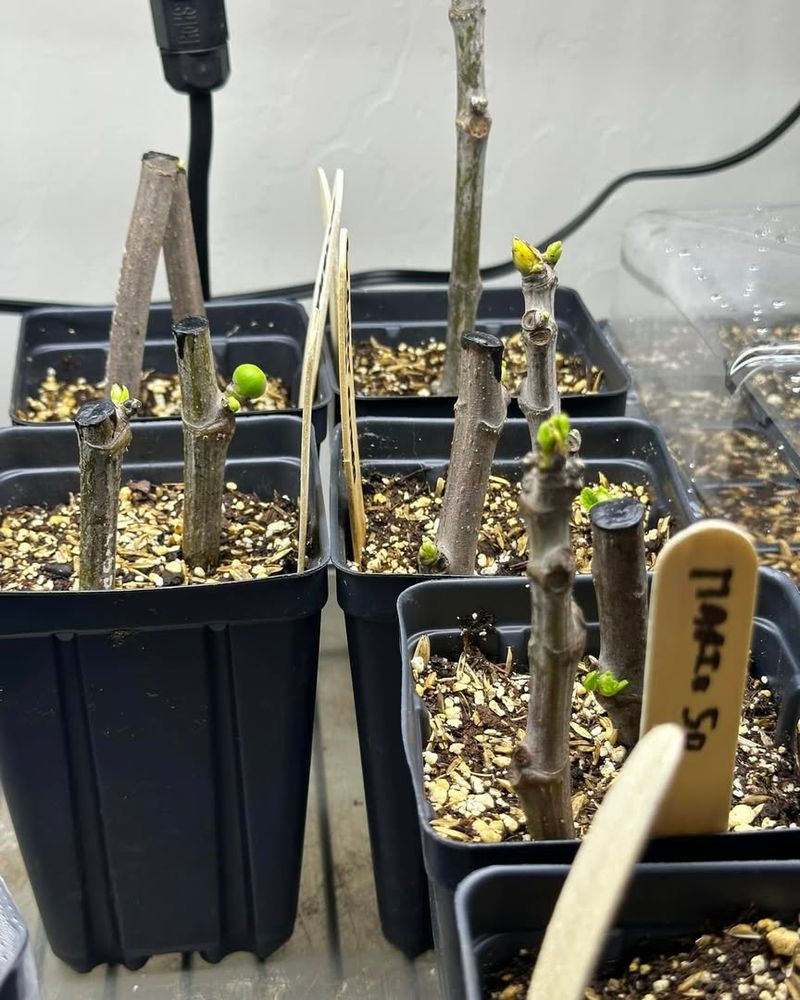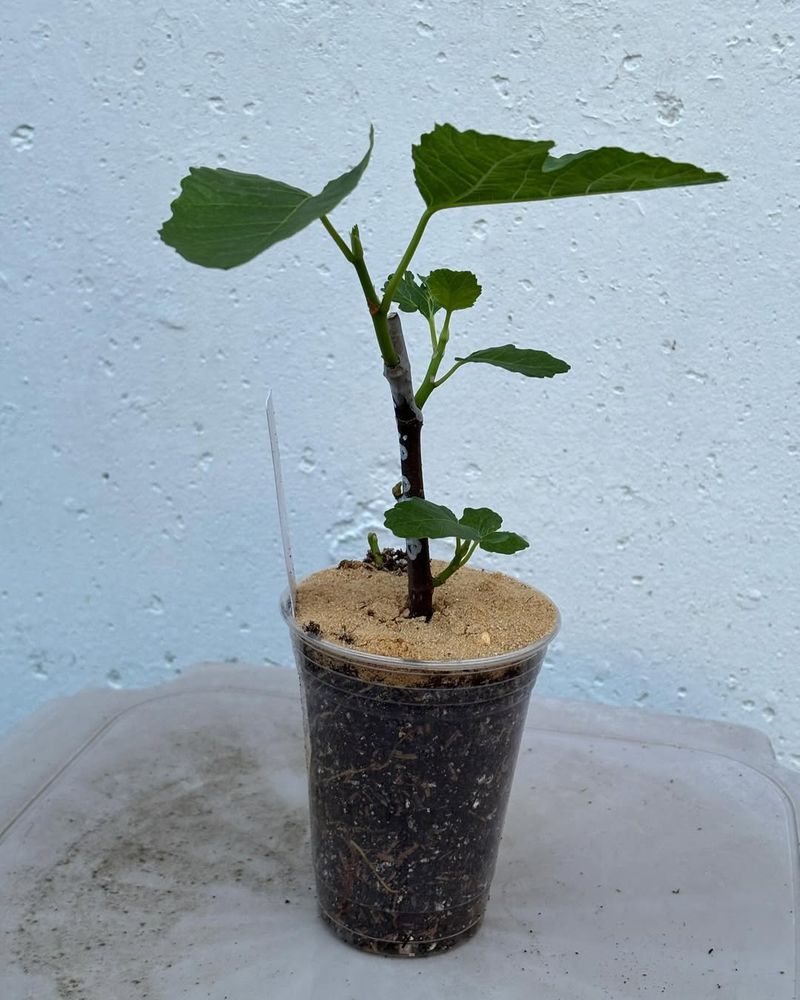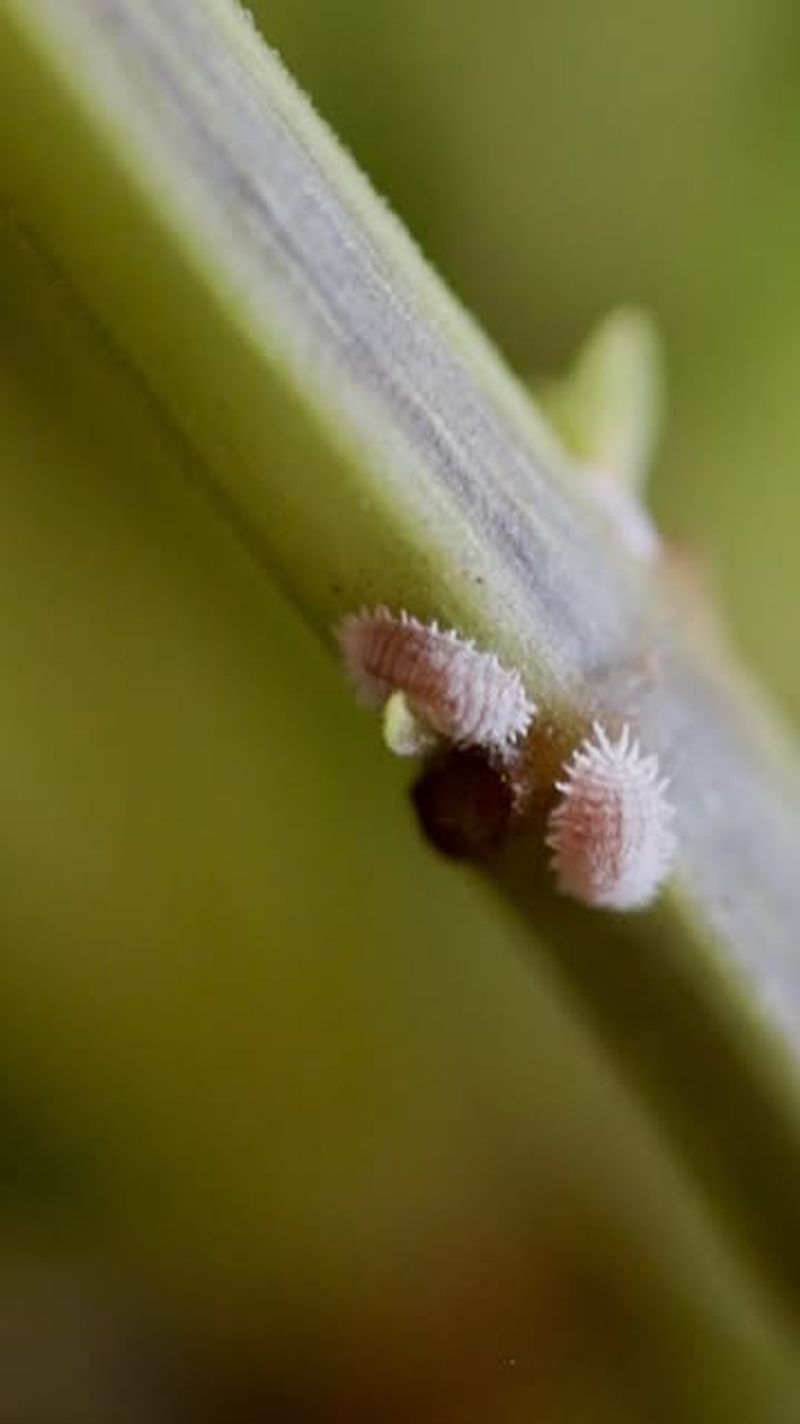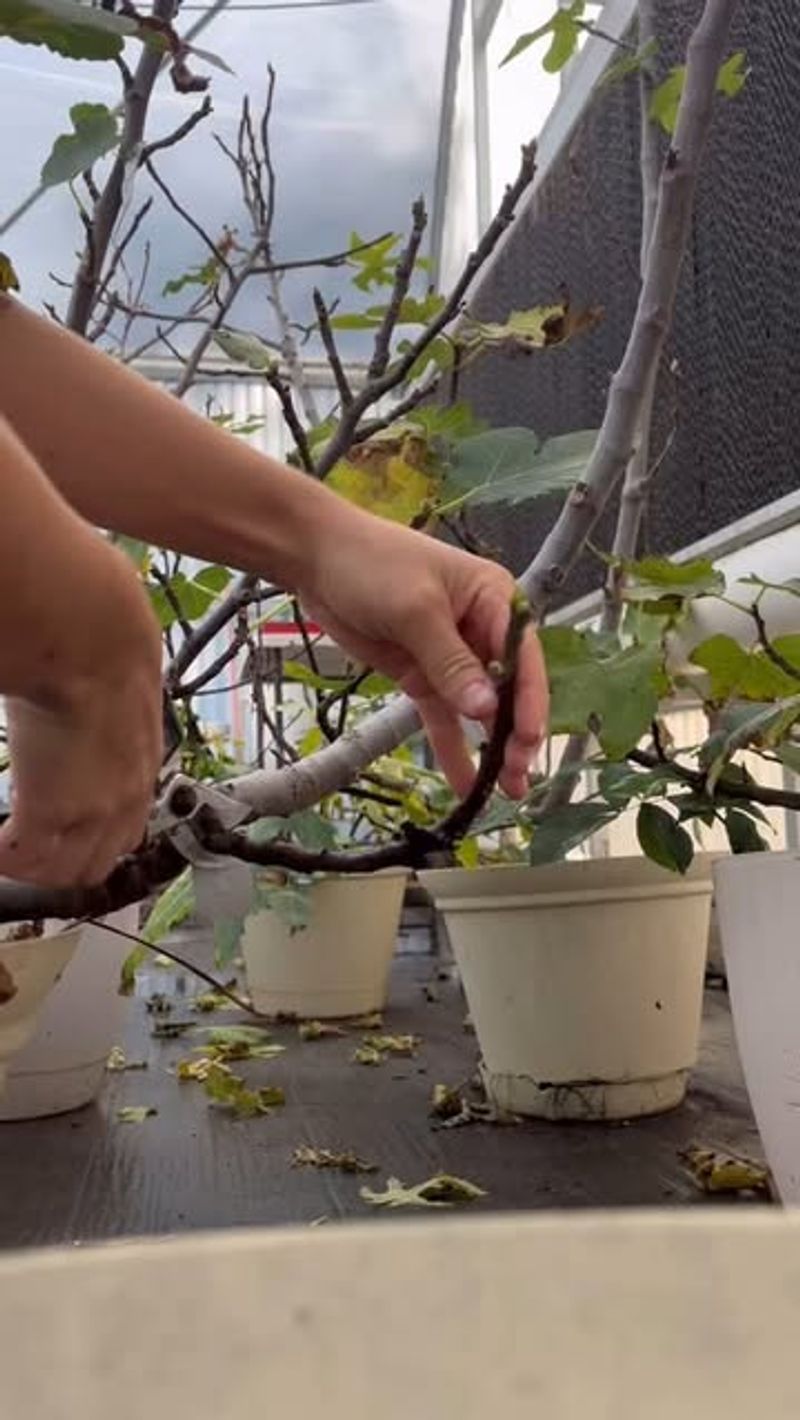Ready to branch out and cultivate your own fig tree haven? Propagating fig trees isn’t just about planting cuttings; it’s about sowing the seeds of patience and reaping the sweet rewards. Whether you’re a budding gardener or have a seasoned green thumb, these essential tips will help your fig trees flourish. Let’s dig in and get those roots growing!
1. Choose A Healthy Parent Tree
Start with a tree that looks vibrant—lush leaves, solid bark, and no pests or disease in sight. A strong parent means stronger cuttings. Don’t settle for anything that looks sickly or underperforming.
Walk around the tree and really inspect it. Look for signs like dark spots, wilted leaves, or cracked bark. If anything feels off, move on to a better tree.
Pick a variety that suits your climate and taste preferences. A good fig tree not only grows well but gives you amazing fruit too. Starting with quality makes everything easier later.
2. Use Semi-Hardwood Cuttings
Semi-hardwood cuttings are the sweet spot—not too green, not too woody. They root more reliably and bounce back faster. Aim for branches that feel firm but still have a little give.
Cuttings taken from these in-between stages hold moisture better and resist rot. They’re mature enough to grow roots, but young enough to stay flexible and alive. It’s a nice balance.
Avoid soft, green tips or old, brittle wood. Both can struggle to root or rot quickly. Go for healthy middle-aged stems for the best results.
3. Take Cuttings In Late Winter
Late winter is prime time—it’s when the tree is dormant but still holding energy. This makes it less stressful for the tree and more successful for your cuttings. Plus, it’s right before the big growth surge in spring.
You’ll get cuttings that are full of stored nutrients, just waiting to sprout. And since the tree isn’t actively growing, you’re less likely to damage it. Timing really does make a difference.
Avoid taking cuttings during summer or fall when energy is focused elsewhere. Late winter gives you a head start and stronger roots come spring. It’s like catching the wave just before it breaks.
4. Cut At A 45-Degree Angle
Making your cut at a 45-degree angle isn’t just for aesthetics; it increases the surface area for rooting. This technique enhances the cutting’s ability to absorb water and nutrients, giving it a better start. Plus, it helps prevent water from pooling on the cut surface, reducing the risk of rot.
An angled cut also exposes more cambium—the layer responsible for root development. This exposure can lead to faster and more robust root growth. It’s a simple tweak that can make a significant difference in your propagation success.
So, before you take that cutting, tilt your pruners to 45 degrees. This small adjustment sets the stage for a healthier, more vigorous fig tree. It’s one of those little details that experienced gardeners swear by.
5. Use Sharp, Sterile Tools
Using sharp, sterile tools is crucial when taking cuttings. A clean cut minimizes damage to plant tissues, promoting quicker healing and rooting. Dirty or dull tools can crush stems and introduce pathogens, hindering your propagation efforts.
Before making any cuts, wipe your tools with rubbing alcohol or a bleach solution. This practice ensures that you’re not transferring diseases between plants. It’s a simple step that can save you a lot of trouble down the line.
Investing in quality pruners and keeping them sharp not only makes the job easier but also improves the success rate of your cuttings. Remember, healthy cuttings start with clean cuts. It’s an often-overlooked aspect that plays a significant role in plant health.
6. Trim Leaves From Cuttings
Removing most of the leaves from your fig cuttings reduces water loss through transpiration. This conservation of moisture is vital since the cutting has no roots to absorb water yet. Leaving a couple of small leaves or trimming large ones in half is sufficient.
This practice directs the plant’s energy toward root development rather than sustaining unnecessary foliage. It’s a strategic move to encourage faster rooting. Plus, it helps prevent mold and rot, which can occur if too much foliage is left on.
So, grab those scissors and don’t be afraid to give your cuttings a little trim. It’s a simple step that can significantly boost your propagation success. Less foliage means more focus on root growth, leading to a healthier new plant.
7. Dip Cut Ends In Rooting Hormone
Boost your fig cuttings’ success rate by dipping the cut ends into rooting hormone. This encourages faster and more robust root development, giving your new plants a head start. Think of it as giving them a little extra push toward independence.
Rooting hormone can be found in powder, gel, or liquid form at most garden centers. Simply dip the cut end into the hormone before planting. This small step can significantly enhance your propagation efforts.
While figs can root without it, using rooting hormone increases the likelihood of success, especially for more challenging varieties. It’s a simple trick that can make a big difference in your gardening endeavors.
8. Use Well-Draining Soil
Figs despise soggy feet, so choosing well-draining soil is crucial. A mix that retains some moisture but allows excess water to escape prevents root rot. Think of it as creating a comfortable bed that’s neither too wet nor too dry.
Combine components like perlite, vermiculite, or coarse sand with potting soil to achieve the right balance. This ensures your cuttings have access to necessary moisture without being waterlogged. Proper drainage sets the foundation for healthy root development.
Remember, the goal is to mimic the fig’s natural environment. Well-draining soil replicates the conditions where figs thrive, increasing your propagation success. It’s all about creating the right home for your future tree.
9. Plant Cuttings In Pots
Starting fig cuttings in pots offers better control over their environment. You can manage soil quality, moisture levels, and exposure to elements more effectively. It’s like giving your cuttings a cozy nursery before they face the big world.
Choose pots with adequate drainage holes to prevent water accumulation. This ensures that excess water escapes, keeping the soil conditions optimal for root growth. Remember, good drainage is key to preventing root diseases.
Using pots also allows you to move the cuttings to ideal locations as needed. Whether it’s chasing the sunlight or protecting them from harsh weather, potted cuttings offer flexibility. This mobility can be a game-changer in successful propagation.
10. Keep Soil Moist But Not Wet
Maintaining the right moisture balance is crucial for fig cuttings. The soil should be consistently moist, providing the necessary hydration for root development. However, overly wet soil can lead to root rot and other fungal issues. It’s a delicate dance between too dry and too soggy.
To achieve this balance, water the soil thoroughly after planting the cuttings, then allow the top inch to dry out before the next watering. This approach ensures the roots receive adequate moisture without being drowned. Remember, it’s better to err on the side of slightly dry than too wet when it comes to fig propagation.
Monitoring the soil’s moisture can be done by feeling the soil or using a moisture meter. Consistent, moderate moisture encourages healthy root growth, setting the stage for a thriving fig tree. Patience and attentiveness during this stage pay off in the long run.
11. Cover With A Plastic Dome
Creating a mini greenhouse effect can significantly boost your fig cuttings’ success rate. Covering them with a plastic dome or a clear plastic bag helps retain humidity and warmth, essential factors for root development. This controlled environment mimics the conditions of a greenhouse, providing a cozy space for your cuttings to thrive.
Ensure the covering doesn’t touch the leaves to prevent mold growth. Additionally, periodically remove the dome to allow fresh air circulation, reducing the risk of fungal issues. This simple step can make a world of difference in your propagation journey.
By maintaining high humidity around the cuttings, you reduce water loss through transpiration. This is particularly important in the early stages when roots have not yet developed. A plastic dome is an easy and effective way to create this humid microenvironment.
12. Maintain Warm Temperatures
Fig cuttings root best in warm conditions. Aim to keep the surrounding temperature between 70-75°F (21-24°C) for optimal growth. This warmth encourages the cuttings to develop roots more rapidly.
If you’re propagating indoors during cooler months, consider using a heat mat to maintain consistent soil temperature. Placing the cuttings in a warm, sunny spot can also help, but avoid direct sunlight that might overheat them. Consistent warmth is a key ingredient in the recipe for successful fig propagation.
Temperature fluctuations can stress the cuttings and hinder root development. Maintaining a stable, warm environment ensures that the cuttings remain in an optimal state for rooting. Monitoring and adjusting the temperature as needed can greatly enhance your success rate.
13. Provide Indirect Sunlight
Placing your fig cuttings in indirect sunlight ensures they receive adequate light without the risk of scorching. Direct sun can be too intense for young cuttings, leading to dehydration and stress. A bright, shaded area or a spot with filtered light is ideal for promoting healthy growth.
Indirect light encourages steady photosynthesis, which fuels the development of roots and shoots. This gentle exposure helps the cuttings acclimate and build resilience. Remember, too much direct sunlight at this stage can hinder more than help.
Monitor the light conditions throughout the day. If you notice the cuttings receiving harsh rays, consider relocating them or using a sheer curtain to diffuse the light. Balancing light exposure is key to nurturing robust fig plants.
14. Avoid Direct Harsh Sun
Shielding your fig cuttings from direct, harsh sunlight prevents them from drying out and becoming stressed. Young cuttings are particularly vulnerable to intense light, which can impede their rooting process. Providing a protected environment fosters better growth outcomes.
Consider placing the cuttings under a shade cloth or in a location that receives morning sun followed by afternoon shade. This setup offers a gentle introduction to sunlight without the risk of overexposure. It’s all about creating a nurturing space for your cuttings to thrive.
Remember, the goal is to mimic the natural understory conditions where young plants often start. By avoiding direct harsh sun, you’re setting the stage for successful fig propagation. Patience and attentiveness to their light needs will pay off in healthy, rooted cuttings.
15. Mist Cuttings Regularly
Regular misting keeps the humidity levels around your fig cuttings optimal, aiding in moisture retention. Since cuttings lack roots initially, they rely on ambient humidity to prevent dehydration. A gentle misting routine can make a significant difference in their survival rate.
Use a spray bottle to lightly mist the leaves and surrounding air once or twice a day. Be cautious not to overdo it; excessive moisture can lead to fungal issues. The aim is to maintain a balanced environment that supports hydration without inviting disease.
Observing your cuttings will guide your misting schedule. If the leaves appear dry or wilted, it may indicate a need for increased humidity. Conversely, signs of mold or rot suggest it’s time to reduce moisture. Attentive care ensures your fig cuttings develop into robust plants.
16. Check For Root Growth Monthly
Regularly monitoring your fig cuttings for root development is crucial to ensure they’re progressing well. Gently tug on the cutting; if you feel resistance, it’s a sign that roots are forming. This simple check helps you gauge when they’re ready for transplanting.
Be cautious not to disturb the cuttings excessively during these checks. Too much movement can damage delicate new roots. A monthly gentle test strikes the right balance between monitoring progress and ensuring healthy development.
Observing root growth also allows you to adjust care routines as needed. If roots are slow to develop, consider factors like temperature, moisture, and light. Tweaking these conditions can promote healthier and faster root formation.
17. Transplant When Roots Are Strong
Once your fig cuttings have developed a robust root system, it’s time to transplant them into larger pots or their permanent outdoor location. Strong roots are essential for the plant to establish itself and thrive in a new environment.
Ensure the new planting site or pot has well-draining soil to prevent waterlogged conditions, which figs dislike. Handle the cuttings carefully during transplanting to minimize root disturbance. A smooth transition encourages continued healthy growth.
After transplanting, water the fig plant thoroughly to help settle the soil around the roots. Monitor the plant closely in the following weeks, providing appropriate care to support its adaptation to the new setting.
18. Harden Off Before Planting Outdoors
Before moving your fig cuttings outdoors permanently, it’s important to acclimate them to the external environment—a process known as hardening off. This helps the young plants adjust to factors like sunlight, wind, and temperature fluctuations.
Start by placing the cuttings outside in a shaded, protected area for a few hours each day, gradually increasing their exposure over one to two weeks. This gradual introduction reduces transplant shock and strengthens the plants.
Pay attention to weather conditions during this period. Avoid exposing the cuttings to harsh elements like strong winds or extreme temperatures until they’re adequately hardened. Proper hardening off sets the stage for successful outdoor growth.
19. Monitor For Pests And Mold
Keeping a vigilant eye on your fig cuttings is crucial for early detection of pests and mold. Common issues like aphids, spider mites, or fungal growth can hinder root development and overall plant health. Regular inspections allow you to address problems before they escalate.
Ensure the environment around your cuttings is clean and well-ventilated. Avoid overwatering, as excess moisture can promote mold growth. If you notice any signs of pests or mold, promptly treat them with appropriate organic or chemical controls to prevent spread.
Maintaining optimal humidity and airflow balances is key. Using sterilized tools and clean pots can also reduce the risk of contamination.
20. Be Patient And Persistent
Patience is essential when propagating fig trees. Root development can take several weeks to months, depending on the variety and conditions. Avoid the temptation to check for roots frequently, as disturbance can hinder progress.
Stay consistent with your care routine, providing appropriate moisture, light, and temperature. Not all cuttings will succeed, and that’s a natural part of the propagation process. Learning from each attempt refines your technique and increases future success rates.
Celebrate small milestones, like the emergence of new leaves or visible root growth. Each step forward is a testament to your dedication. With time and persistence, you’ll cultivate healthy fig trees that reward your efforts with bountiful harvests.

